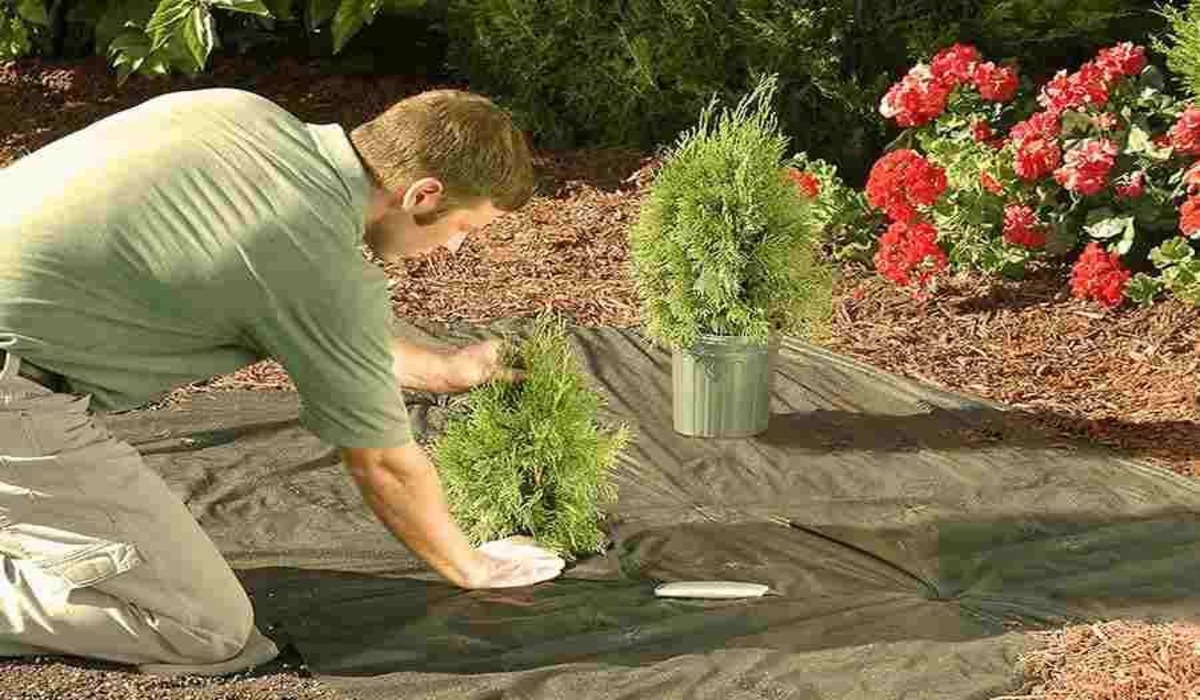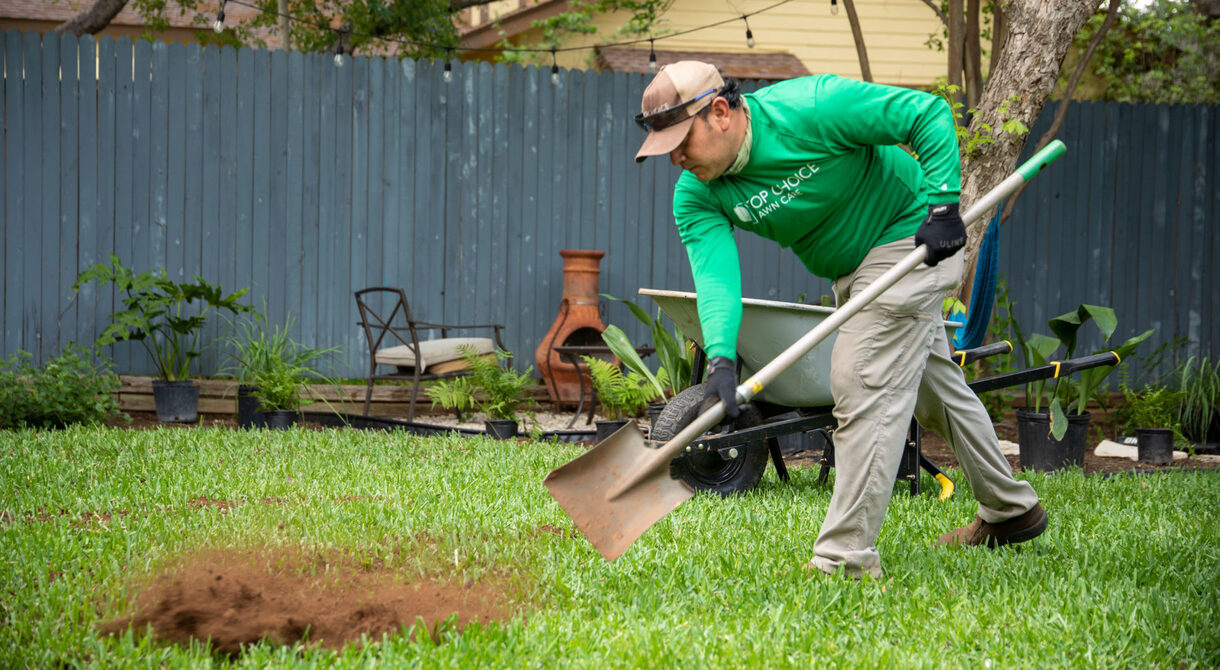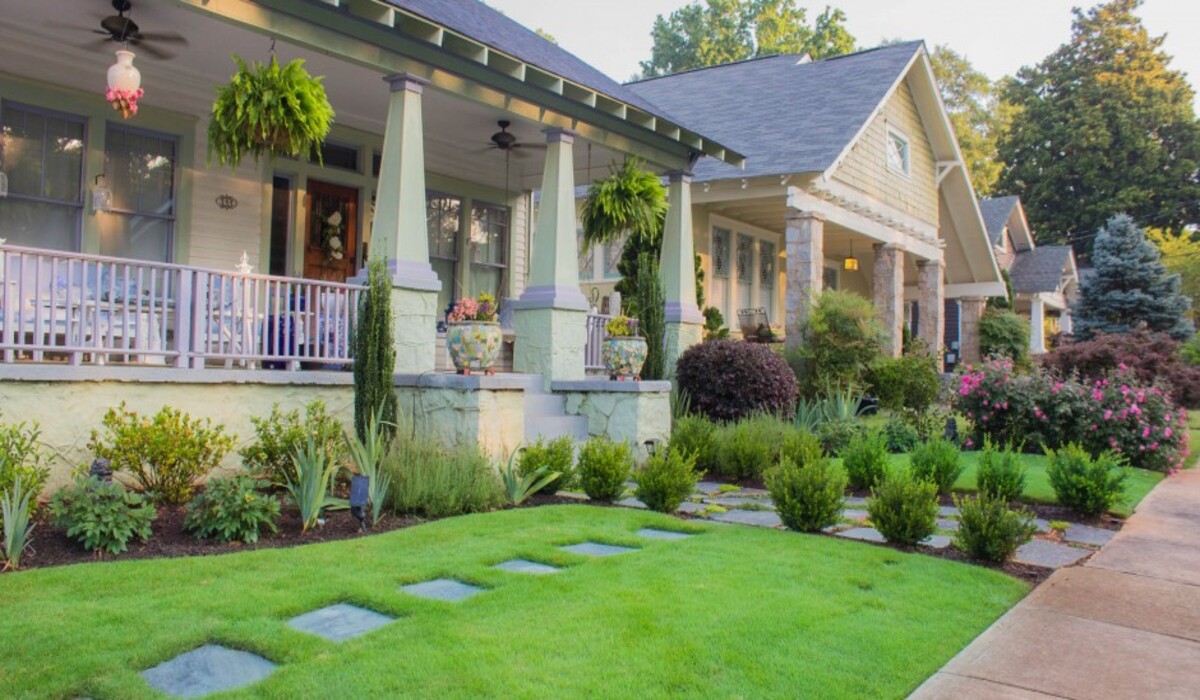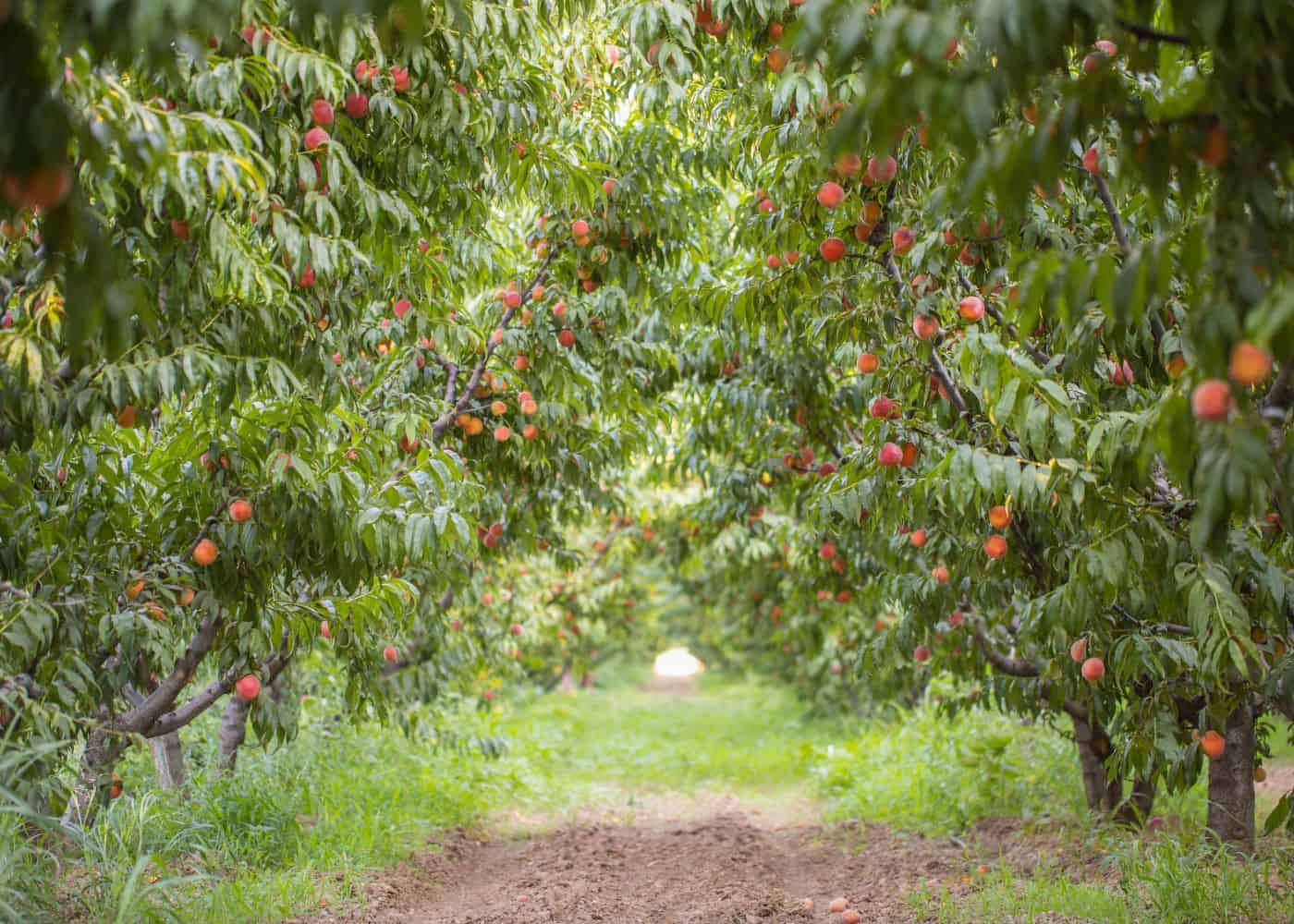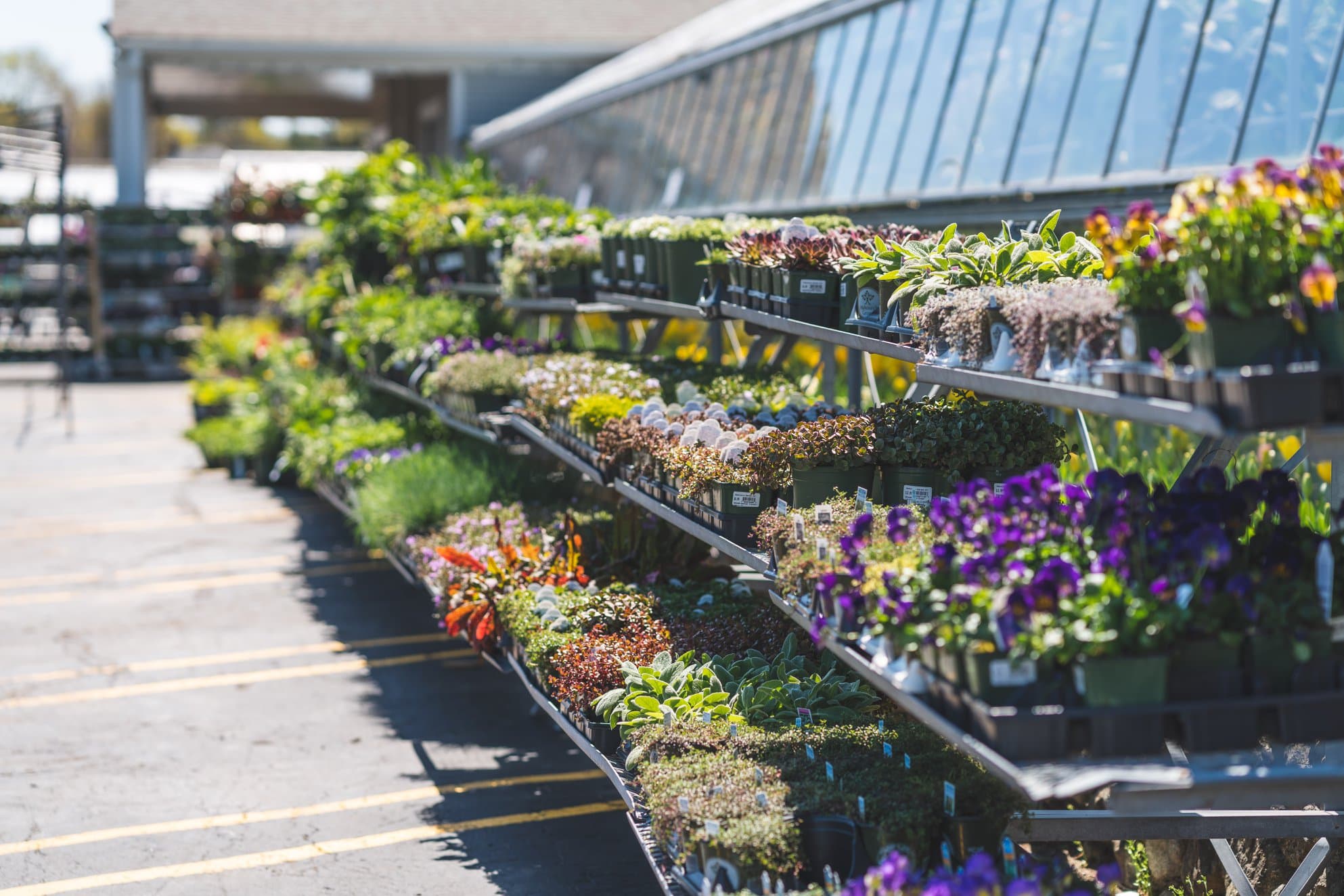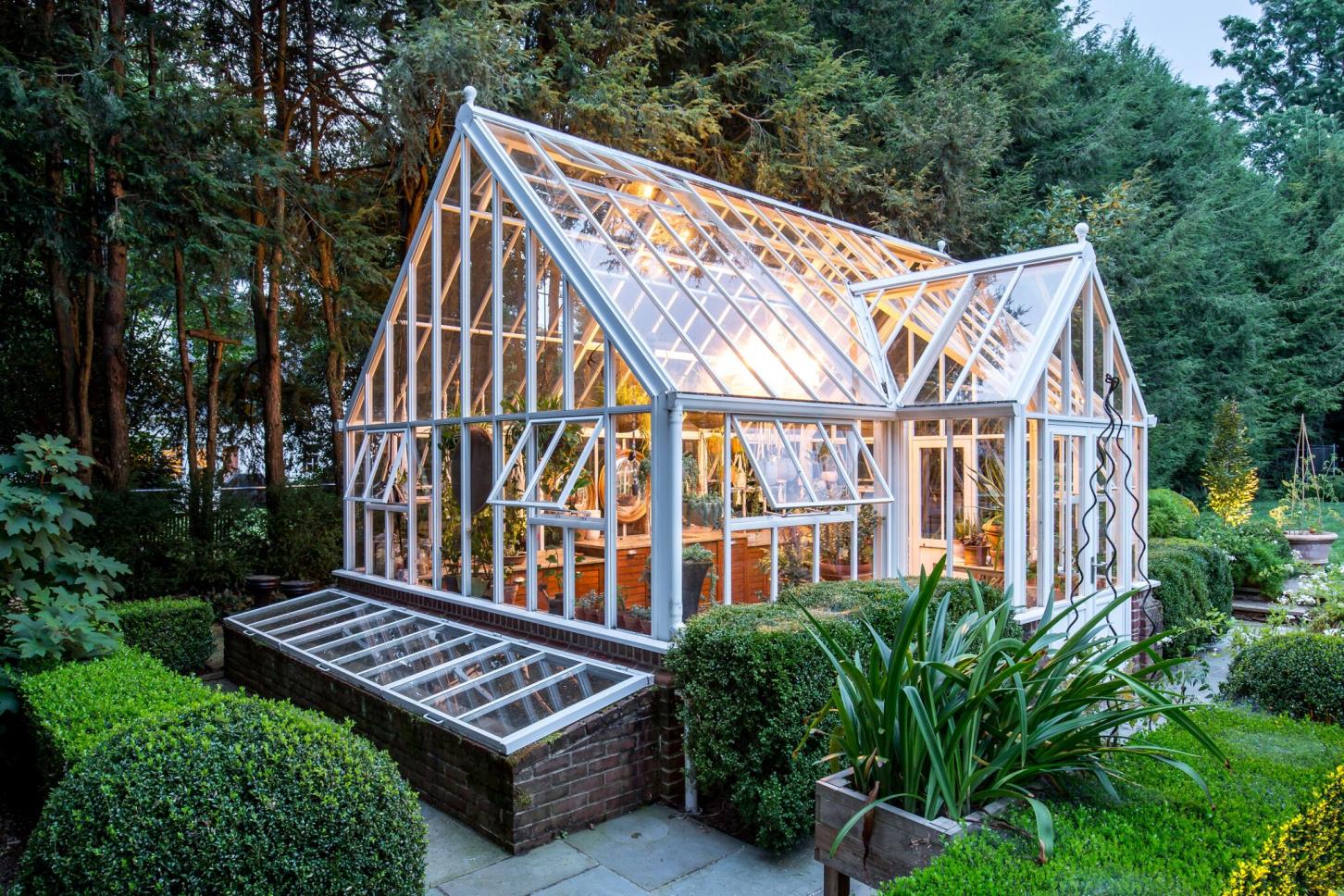Home>Gardening Tips and Tricks>Eco-Friendly Gardening>How Much Hydrogen Peroxide In Hydroponics
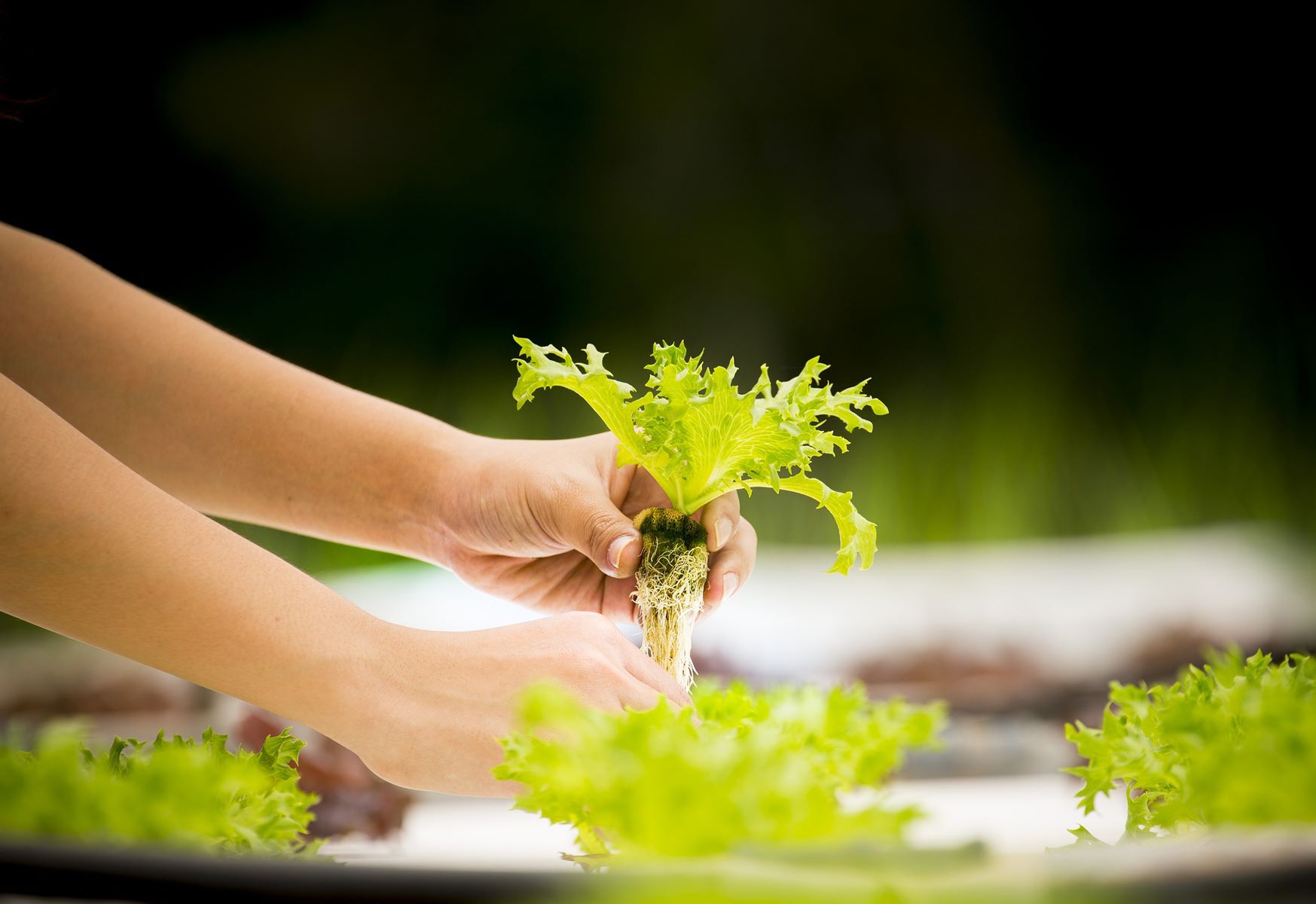

Eco-Friendly Gardening
How Much Hydrogen Peroxide In Hydroponics
Modified: January 22, 2024
Discover how much hydrogen peroxide to use in hydroponics for eco-friendly gardening. Learn the benefits and proper application methods in this comprehensive guide.
(Many of the links in this article redirect to a specific reviewed product. Your purchase of these products through affiliate links helps to generate commission for Chicagolandgardening.com, at no extra cost. Learn more)
Table of Contents
- Introduction
- What is Hydrogen Peroxide?
- The Role of Hydrogen Peroxide in Hydroponics
- Benefits of Using Hydrogen Peroxide in Hydroponics
- How to Use Hydrogen Peroxide in Hydroponics
- Recommended Concentration of Hydrogen Peroxide in Hydroponic Systems
- Risks and Precautions When Using Hydrogen Peroxide in Hydroponics
- Alternatives to Hydrogen Peroxide in Hydroponics
- Conclusion
Introduction
Welcome to the world of hydroponic gardening, where you can grow an abundance of plants without the need for traditional soil-based methods. As more people become conscious of their environmental impact, eco-friendly gardening practices are gaining popularity. One such practice is hydroponics, a soil-less cultivation technique that maximizes plant growth while minimizing water and nutrient consumption.
Hydroponics relies on a nutrient-rich water solution to provide plants with everything they need to thrive. However, this controlled environment can also create the perfect conditions for the growth of harmful pathogens and algae. To combat these issues, many hydroponic gardeners turn to hydrogen peroxide as a natural and eco-friendly solution.
Hydrogen peroxide (H2O2) is a chemical compound composed of hydrogen and oxygen. It is most commonly known for its antiseptic properties and use as a disinfectant. In the context of hydroponics, hydrogen peroxide serves as an oxygen source and a cleaning agent, offering several benefits to gardeners.
In this article, we will explore the role of hydrogen peroxide in hydroponics, the benefits it provides, how to use it effectively, and the precautions you should take. Whether you’re a novice hydroponic enthusiast or a seasoned gardener looking for more eco-friendly options, this article will provide valuable insights into incorporating hydrogen peroxide into your hydroponic system.
What is Hydrogen Peroxide?
Hydrogen peroxide (H2O2) is a chemical compound that consists of two hydrogen atoms bonded to two oxygen atoms. It is a pale blue liquid that is often used as a disinfectant and antiseptic due to its ability to kill bacteria, viruses, and fungi.
Hydrogen peroxide is produced naturally in the environment as a byproduct of plant and animal metabolism. It is also formed in the atmosphere through the interaction of sunlight with various compounds. However, commercially available hydrogen peroxide is typically produced through a careful manufacturing process.
In hydroponics, hydrogen peroxide is primarily used for its oxygen-releasing properties. When it comes into contact with water, it breaks down into water (H2O) and oxygen (O2) molecules. This release of oxygen helps to increase the oxygen levels in the water, improving the overall oxygenation of the hydroponic system.
Additionally, hydrogen peroxide acts as a cleaning agent. It can effectively control the growth of algae, bacteria, and other microorganisms that can be detrimental to the health of hydroponic plants. By eliminating these unwanted contaminants, hydrogen peroxide contributes to a clean and hygienic hydroponic environment.
It is worth noting that hydrogen peroxide is available in different concentrations, typically ranging from 3% to 35%. The concentration refers to the percentage of hydrogen peroxide present in the solution. Higher concentrations of hydrogen peroxide are more potent and should be used with caution.
Before incorporating hydrogen peroxide into your hydroponic system, it is essential to understand its role and how to use it effectively. In the next sections, we will delve deeper into the benefits of using hydrogen peroxide in hydroponics and provide guidelines for its proper usage.
The Role of Hydrogen Peroxide in Hydroponics
Hydrogen peroxide plays a crucial role in hydroponics by providing oxygenation and acting as a cleaning agent. Understanding its role can help you harness its benefits to achieve optimal plant growth in your hydroponic system.
Oxygenation is vital for the health of hydroponic plants as they rely on dissolved oxygen in the water for respiration. In traditional soil-based gardening, roots absorb oxygen from the air pockets in the soil. However, in hydroponics where plants are grown in water-based solutions, the oxygen levels can be limited. This is where hydrogen peroxide comes in. When added to the hydroponic solution, hydrogen peroxide breaks down into oxygen molecules. These oxygen molecules dissolve in the water and provide a supplemental source of oxygen for the plant roots. Increased oxygenation leads to improved nutrient uptake and overall healthier plant growth.
Additionally, hydrogen peroxide acts as a cleaning agent in hydroponics. The controlled environment of a hydroponic system can create favorable conditions for the growth of pathogens, algae, and other harmful microorganisms. These unwanted contaminants can compete with plants for nutrients, leading to nutrient deficiencies and stunted growth. Hydrogen peroxide effectively controls the growth of algae, bacteria, and fungi, minimizing the risk of plant disease and enhancing the overall cleanliness of the system.
The cleaning properties of hydrogen peroxide are particularly beneficial in recirculating hydroponic systems, where the nutrient solution is continuously reused. In these systems, organic matter and root debris can accumulate over time, serving as a breeding ground for harmful microbes. Adding hydrogen peroxide at regular intervals helps to sanitize the system, preventing the buildup of pathogens and maintaining a hygienic growing environment.
By providing oxygenation and acting as a cleaning agent, hydrogen peroxide plays a critical role in promoting healthy plant growth and preventing the detrimental effects of pathogens in hydroponics. In the next section, we will explore the numerous benefits that hydrogen peroxide offers to hydroponic gardeners.
Benefits of Using Hydrogen Peroxide in Hydroponics
Using hydrogen peroxide in hydroponics offers a range of benefits that can maximize plant growth and ensure a healthy, clean growing environment. Let’s explore some of the advantages of incorporating hydrogen peroxide into your hydroponic system:
1. Increased Oxygen Levels: Hydrogen peroxide releases oxygen when it comes into contact with water. This additional oxygen enhances the oxygenation of the hydroponic solution, ensuring that plant roots receive an ample supply. Improved oxygen levels in the root zone contribute to healthier root development, better nutrient uptake, and overall vigorous plant growth.
2. Prevention of Root Diseases: Pathogens such as Pythium and Fusarium can cause root diseases in hydroponic systems, leading to root rot and plant decline. Hydrogen peroxide acts as a natural disinfectant, controlling the growth of these harmful microorganisms. By using hydrogen peroxide, you can reduce the risk of root diseases and promote healthier root systems.
3. Algae Control: Algae can proliferate in hydroponic systems, depriving plants of nutrients and hindering their growth. Hydrogen peroxide effectively suppresses the growth of algae, preventing them from competing with plants for resources. This helps maintain nutrient balance and ensures optimal plant growth.
4. Cleanliness and Hygiene: Hydrogen peroxide acts as a cleaning agent, eliminating organic matter, root debris, and other contaminants in the hydroponic system. By keeping the system clean and free from unwanted debris, you can prevent the accumulation of harmful pathogens and maintain a hygienic growing environment.
5. pH Regulation: Hydrogen peroxide can be used to adjust and stabilize pH levels in the hydroponic solution. It can help raise the pH in acidic conditions or lower the pH in alkaline conditions, ensuring that the nutrient solution remains within the optimal pH range for nutrient availability and uptake.
6. Environmental Friendly: Hydrogen peroxide is an environmentally friendly option for hydroponic gardening. It breaks down into water and oxygen, leaving no harmful residues or long-lasting impact on the environment. By choosing hydrogen peroxide, you can adopt more sustainable practices in your gardening endeavors.
Incorporating hydrogen peroxide into your hydroponic system can provide these significant benefits, enhancing the overall health and productivity of your plants. In the next section, we will discuss how to effectively and safely use hydrogen peroxide in hydroponics.
How to Use Hydrogen Peroxide in Hydroponics
Using hydrogen peroxide in hydroponics requires careful consideration and proper techniques to ensure its effectiveness and safety. Here are some guidelines on how to use hydrogen peroxide in your hydroponic system:
1. Dilution: Hydrogen peroxide should always be diluted before adding it to your hydroponic system. Higher concentrations of hydrogen peroxide can be too harsh for plants and may cause damage. Typically, a dilution ratio of 1 to 3 teaspoons of hydrogen peroxide per gallon of water is recommended for most hydroponic setups. However, it is essential to refer to the product label or consult a reliable source to determine the appropriate dilution ratio for your specific needs.
2. Application Method: Hydrogen peroxide is typically added directly to the hydroponic reservoir. Ensure that the solution is well-mixed to distribute the hydrogen peroxide evenly. You can use a gentle stirring or recirculating pump to facilitate thorough mixing.
3. Timing and Frequency: It is best to add hydrogen peroxide to your hydroponic system during the lights-on period of your plant’s growth cycle. This allows the oxygen released by hydrogen peroxide to be readily available to the plants. The frequency of hydrogen peroxide application will depend on the specific needs of your hydroponic system and the presence of any issues such as algae growth or root diseases. Weekly or bi-weekly applications are common, but always monitor the condition of your plants and adjust the frequency accordingly.
4. Avoid Overuse: While hydrogen peroxide can benefit your hydroponic system, it is important not to overuse it. Excessive use of hydrogen peroxide can harm beneficial microorganisms in the system and disrupt the balance of the ecosystem. Adhere to the recommended dilution ratios and monitor the health of your plants to avoid any negative effects.
5. Test pH Levels: Hydrogen peroxide can have a slight impact on pH levels in the hydroponic solution. After adding hydrogen peroxide, it is advisable to test and adjust the pH as needed. Use a reliable pH testing kit to ensure that the pH remains within the optimal range for nutrient availability and uptake.
6. Safety Precautions: When handling hydrogen peroxide, it is important to take safety precautions. Always wear protective gloves and goggles to prevent contact with the skin or eyes. Store hydrogen peroxide in a cool, dark place away from direct sunlight and heat sources. Keep it out of reach of children and pets.
By following these guidelines, you can effectively incorporate hydrogen peroxide into your hydroponic system and harness its benefits for optimal plant growth. However, it is important to remember that every hydroponic setup is unique, and it is best to consult with experienced hydroponic gardeners or professionals for specific advice tailored to your system.
Recommended Concentration of Hydrogen Peroxide in Hydroponic Systems
When using hydrogen peroxide in hydroponic systems, it is important to use the appropriate concentration to ensure effectiveness and prevent any harm to your plants. The recommended concentration of hydrogen peroxide can vary depending on the specific needs of your hydroponic setup and the plants you are growing.
For general use in hydroponics, a dilution ratio of 1 to 3 teaspoons of hydrogen peroxide per gallon of water is commonly recommended. This corresponds to approximately a 3% concentration of hydrogen peroxide. This dilution is generally considered safe for most plants and effective in providing the desired oxygenation and cleaning benefits without causing damage.
However, it is essential to note that not all hydrogen peroxide products have the same concentration. Commercially available hydrogen peroxide typically ranges from 3% to 35% concentration. Higher concentration hydrogen peroxide should be used with caution as it can be more potent and may cause harm to your plants if not properly diluted.
Before using hydrogen peroxide, it is crucial to always read and follow the instructions and safety guidelines provided by the manufacturer. The product label will specify the concentration of hydrogen peroxide and may provide recommendations for dilution ratios for different applications.
Additionally, it is advisable to start with a lower concentration and gradually increase it if necessary. This allows you to monitor the response of your plants and ensure they are not negatively impacted by the hydrogen peroxide. Observe your plants closely for any signs of stress or damage, such as wilting or discolored leaves. If you notice any adverse effects, reduce the concentration or frequency of hydrogen peroxide usage.
It is important to understand that the optimal concentration of hydrogen peroxide can also depend on other factors such as the specific type of hydroponic system you are using, the nutrient solution being utilized, and the environmental conditions. Consulting with experienced hydroponic gardeners, professionals, or reputable sources can provide valuable insights and guidance tailored to your unique situation.
Remember, the goal is to find the right balance where hydrogen peroxide effectively serves its purpose of oxygenation and cleaning, without causing harm to your plants or disrupting the delicate ecosystem of your hydroponic system.
By using the recommended concentration of hydrogen peroxide and closely monitoring the response of your plants, you can safely incorporate this natural and eco-friendly solution into your hydroponic system for optimal plant growth and a clean growing environment.
Risks and Precautions When Using Hydrogen Peroxide in Hydroponics
While hydrogen peroxide can offer numerous benefits in hydroponics, it is important to be aware of potential risks and take necessary precautions to ensure the safe and effective use of this chemical compound. Here are some key risks to consider and precautions to take when using hydrogen peroxide in your hydroponic system:
1. Plant Sensitivity: Some plant species may be more sensitive to hydrogen peroxide than others. It is important to monitor your plants closely after adding hydrogen peroxide to ensure they are not experiencing any negative effects. If you notice signs of stress or damage, such as wilting, leaf discoloration, or stunted growth, reduce the concentration or frequency of hydrogen peroxide application.
2. pH Fluctuations: Hydrogen peroxide can slightly affect the pH of the hydroponic solution. It is essential to regularly test the pH levels of the solution and make any necessary adjustments to maintain the optimal pH range for nutrient availability and uptake. Monitoring and managing pH levels will help prevent any adverse effects on plant health.
3. Disruption of Beneficial Microbes: Hydrogen peroxide can disrupt the balance of beneficial microorganisms in the hydroponic system. While it is effective in controlling pathogens and algae, overuse or misuse of hydrogen peroxide can harm beneficial bacteria and fungi that contribute to a healthy ecosystem. To minimize this risk, only use hydrogen peroxide as directed and avoid excessive or unnecessary application.
4. Irritation and Harmful Contact: Hydrogen peroxide can cause skin and eye irritation if it comes into direct contact. Always wear protective gloves and goggles when handling hydrogen peroxide to avoid any contact with the skin or eyes. If the solution accidentally splashes on your skin, rinse thoroughly with water. In case of eye contact, flush the eyes with water for several minutes and seek medical attention if necessary.
5. Storage and Handling: Store hydrogen peroxide in a cool, dark place away from direct sunlight and heat sources. Ensure that it is stored securely and out of reach of children and pets. Avoid mixing hydrogen peroxide with other chemicals unless specified by the manufacturer. Proper storage and handling will help maintain the effectiveness and safety of hydrogen peroxide.
6. Consult Reliable Sources: It is always a good practice to consult with experienced hydroponic gardeners, professionals, or reliable sources for guidance on the safe and effective use of hydrogen peroxide in your specific hydroponic system. They can provide valuable insights and recommendations based on their expertise and experience.
By being aware of these risks and taking necessary precautions, you can use hydrogen peroxide effectively and safely in your hydroponic system. Remember to monitor your plants closely, follow recommended dilution ratios, and handle hydrogen peroxide with care. By doing so, you can harness the benefits of hydrogen peroxide while minimizing any potential risks.
Alternatives to Hydrogen Peroxide in Hydroponics
While hydrogen peroxide is a popular choice for oxygenation and cleaning in hydroponics, there are alternative options available that can provide similar benefits. Here are a few alternatives to consider:
1. Aeration: Increasing oxygenation in hydroponic systems can be achieved through aeration. Airstones or air pumps can be used to introduce and circulate air in the water. This promotes oxygen transfer to the roots, improving nutrient uptake and overall plant health. Aeration also helps prevent the growth of anaerobic bacteria and pathogens.
2. Beneficial Microorganism Inoculants: Inoculants containing beneficial microorganisms can be used to establish a healthy microbial population in the hydroponic system. These microorganisms can help suppress the growth of harmful organisms and promote nutrient cycling. Inoculants can be in the form of liquid or powder and should be added to the hydroponic solution according to the manufacturer’s instructions.
3. UV Sterilization: Ultraviolet (UV) sterilizers are effective in controlling pathogens and algae in hydroponic systems. These devices expose the water to UV light, which kills or inhibits the growth of microorganisms. UV sterilizers are commonly used in recirculating systems to maintain a clean and pathogen-free environment.
4. Organic Pest and Disease Management: Organic pest and disease management techniques can be employed in hydroponics to minimize the need for chemical interventions. These techniques include the use of organic pesticides or insecticidal soaps to control pests, as well as beneficial insects to prey on pest populations. Proper sanitation and plant maintenance practices also play a crucial role in preventing the spread of diseases in hydroponic systems.
5. Biological Fungicides: Biological fungicides derived from beneficial bacteria or fungi can be used to control fungal diseases in hydroponics. These products work by outcompeting or attacking the pathogens, preventing their establishment and spread. Biological fungicides are an eco-friendly alternative to conventional chemical fungicides.
It is important to note that the effectiveness of these alternatives may vary depending on the specific hydroponic system and the plants being grown. Some experimentation may be needed to find the most suitable alternative for your specific needs. Consulting with experienced hydroponic gardeners or professionals can provide valuable insights and recommendations tailored to your system.
By exploring these alternatives, you can find environmentally friendly options that align with your goals of sustainable and eco-friendly hydroponic gardening. Incorporating these alternatives can help create a balanced and healthy hydroponic system while reducing reliance on chemical solutions.
Conclusion
Eco-friendly gardening practices, such as hydroponics, provide an excellent opportunity to cultivate plants while minimizing environmental impact. Hydrogen peroxide offers several benefits when used in hydroponic systems, providing increased oxygenation and acting as a natural cleaning agent. By incorporating hydrogen peroxide into your hydroponic setup, you can promote healthy plant growth, prevent root diseases, control algae growth, and maintain a clean and hygienic environment.
When using hydrogen peroxide in hydroponics, it is crucial to follow recommended dilution ratios, monitor plant sensitivity, and take necessary precautions to avoid any adverse effects. Additionally, alternative methods, such as aeration, inoculants, UV sterilization, organic pest management, and biological fungicides, can also be considered to achieve similar benefits in hydroponics.
By adopting eco-friendly gardening practices and incorporating hydrogen peroxide or its alternatives into your hydroponic system, you can create a sustainable and efficient growing environment. This not only benefits your plants and promotes healthier growth but also contributes to a greener and more eco-conscious approach to gardening.
Remember, each hydroponic system is unique, and it’s important to monitor the health of your plants, adjust your approach as needed, and consult with experienced gardeners or professionals for personalized guidance. Continually seeking knowledge and staying informed about eco-friendly gardening practices will empower you to make informed decisions and achieve success in your hydroponic endeavors.

